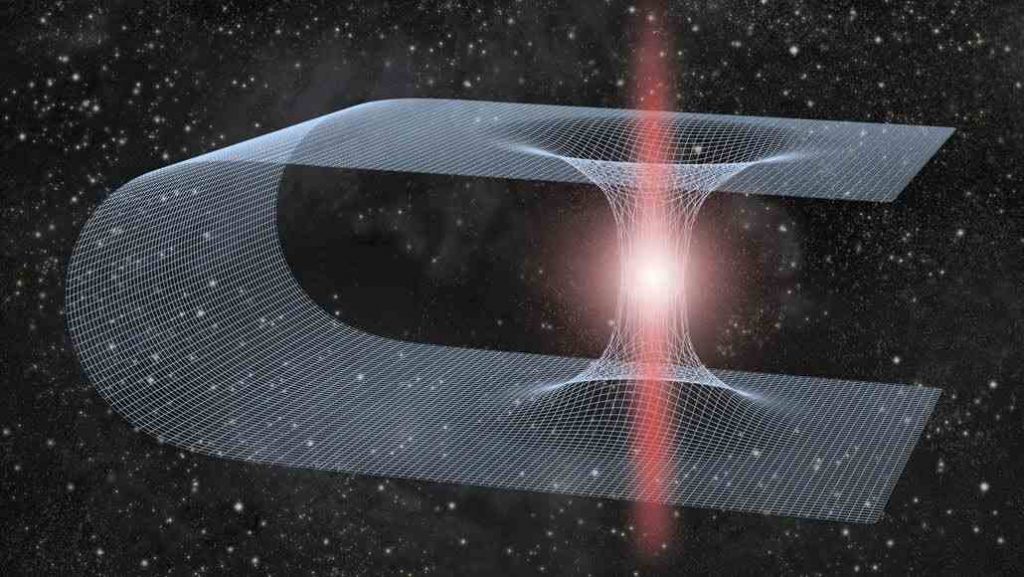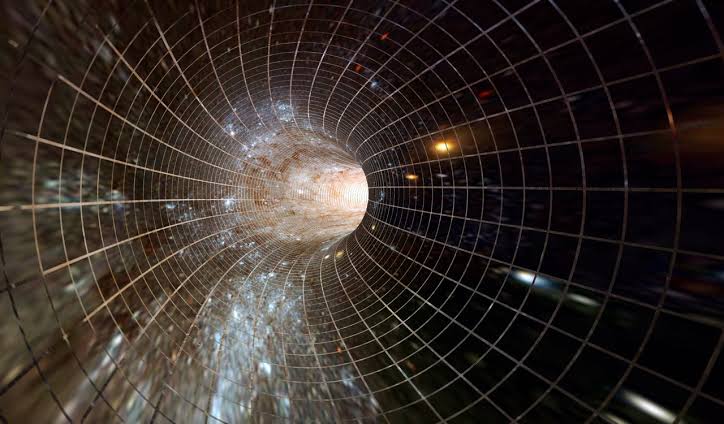If time travel is possible, wormholes that can be traversed may occur. A suggested time-travel machine based on a traversable wormhole may theoretically function like this: The wormhole’s one end is accelerated to a substantial fraction of the speed of light, maybe via a sophisticated propulsion technology, and then returned to its birthplace.
Another option is to transfer one of the wormhole’s entrances into the gravitational field of an object with higher gravity than the other entrance, then return it to a place near the other opening. Time dilation allows the movable end of the wormhole to be ageless, or become younger than the fixed end as observed by an external observer in both of these approaches; nevertheless, time links differently via the wormhole than outside.
How to create A Wormhole for Time Travel? will be discussed in this post. So, in order to satisfy your curiosity, let’s get right into it.
What is a wormhole?
Newton’s theory of gravity reigned dominant until the early 1900s. It was the belief that every item in the Universe, including you and me, have an intrinsic force that attracts other objects. The gravitational attraction of an item increases with its size. This helps to explain why humans cling to the Earth rather than soaring out into space.
However, Albert Einstein shattered that notion in 1915. He proposed that gravity is caused by a distortion in spacetime (a combination of space and time into one continuum). In essence, the existence of a thing deforms space and time around it, leaving a mark on the cosmos.
Wormholes for Space Travel
A wormhole is a potential space-time connection between two distant places. Although it is hard to properly envision a three-dimensional wormhole, a two-dimensional approximation can be built to facilitate visualization. Consider a folded sheet of paper contained in a higher three-dimensional environment, where a tube connects two distant spots on the paper, A and B. The wormhole’s length can be much smaller than the distance between point A and point B on the paper, resulting in a bypass.
A true three-dimensional wormhole would have two half-spheres as entrances and exits, rather than 2 different rings like the mouths of the paper tube. Embedding diagrams are lower-dimensional, human-friendly representations, and the classic wormhole picture is commonly represented by the well-known Schwarzchild embedding diagram, which is the wormhole equivalent for a static, non-rotating Schwarzchild black hole.
Related: What did Albert Einstein say about Wormholes?
Time Travel is Becoming A Reality
Einstein’s theory of General Relativity presented the idea that wormholes may, in principle, operate as a bridge between two places that would otherwise be very far apart, and so the concept of bending spacetime was born. A wormhole might connect two separate spots in spacetime’s fabric due to the elasticity of spacetime.
Evidence for this notion has recently progressed beyond the purely speculative. Scientists created what they called a wormhole a few years ago. Their model, on the other hand, developed a magnetic field gateway. As per Smithsonian, if another magnetic field goes through the wormhole, it appears to depart space altogether, only appearing at either end.
Time travel is conceivable, but only in one direction.
The ability to travel across time, whether to repair a past mistake or gain insight, has long been a subject of fascination in science fiction. discussion among theoretical physicists. While the discussion over whether or not it is conceivable to go into the past continues, scientists have decided that traveling into the future is most likely possible. You don’t even need a wormhole or a DeLorean to do this.
In real-life time travel, time dilation, a feature of Einstein’s special relativity, is exploited. Contrary to common perception, time does not remain constant as you move faster across distance. This was initially noticed by Einstein.
As part of his hypothesis, Einstein reinvented space. He invented the word spacetime, which combines the three dimensions of space and the one dimension of time into one concept. Instead of seeing space as a flat as well as a rigid place that retains all of the universe’s objects, Einstein saw it as curved and pliable, capable of forming force of gravity dips around masses which pull other artifacts in, similar to how a bowling ball in the center of a trampoline s causing any smaller object on the bouncy castle to slide towards the center.
Also read: Why is 95% of the universe invisible?
Is It True That Wormholes Exist?
There is currently no observable evidence for wormholes, yet mathematical solutions explaining wormholes have long been recognized to be legitimate theoretical solutions to Einstein’s General Relativity field equations. Wormholes comprised entirely of normal matter with a positive energy density, on the other hand, would be fundamentally unstable and would collapse in the presence of surrounding matter or matter attempting to cross the wormhole.
However, wormholes with stable, traversable entrances and exits may exist if exotic matter with a negative energy density held the entrances and exits open. Exotic matter is the particle physics configuration that causes the Casimir Effect in quantum field theory. If such exotic stuff may exist naturally in high enough concentrations to allow a stable wormhole to develop by regular physical processes, or whether it could be intentionally generated with sufficiently sophisticated technology, are speculative problems.
Is it possible to travel across time via wormholes?
Wormholes connect two places in spacetime, therefore they might theoretically allow time travel as well as space travel. According to general relativity, however, it would be impossible to utilize a wormhole to go back in time before it was originally transformed into a time machine.
Conclusion
Time travel is a difficult concept to grasp. We are aware of no one physics law that expressly prohibits it, yet we can’t seem to discover a means to achieve it, and even if we did, the possibility would bring with it a slew of troubling paradoxes.
Wormholes are spacetime shortcuts, a tunnel that connects two far-flung portions of the universe in a very short distance. If you could build a wormhole, you could easily walk down the tube and end up hundreds of light-years away without making a sweat.
Resent post:


